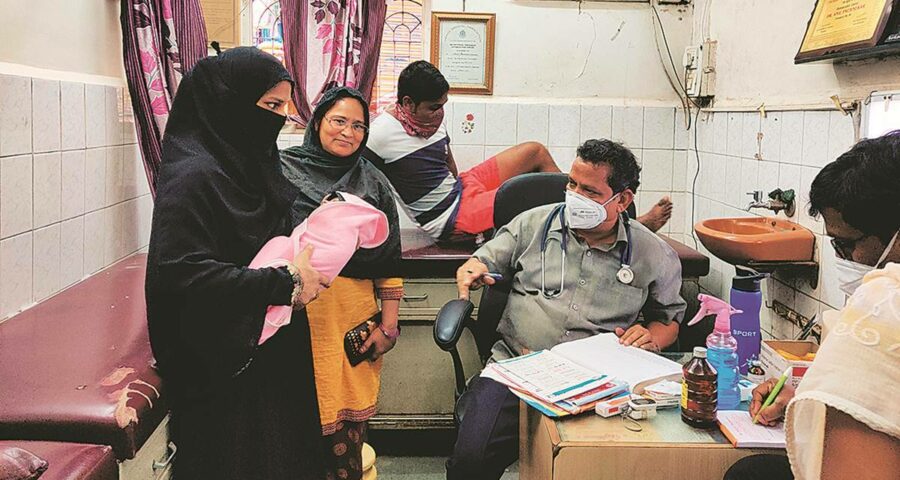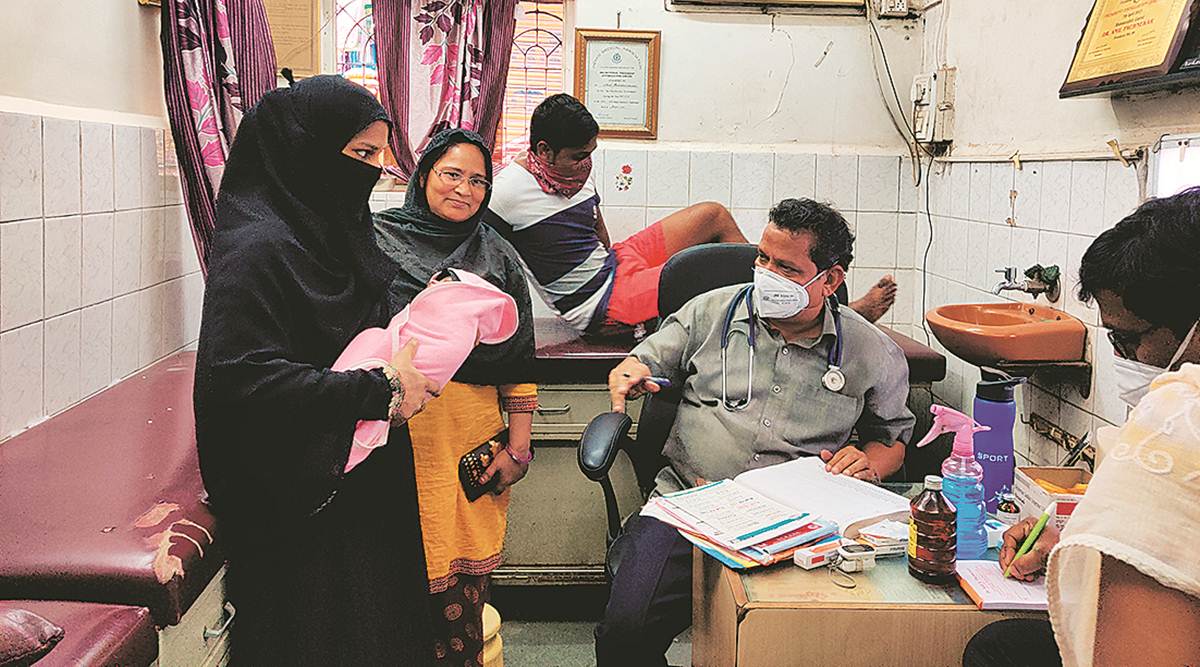With a population of 6.5 lakh squeezed into a 2.5 sq km radius, it didn’t take long for Dharavi to become a ‘red zone’ after the first case was detected on April 1.
“Mumbai is the only city where I can earn enough money to fulfil my dreams, and Dharavi is the cheapest place to stay,” smiles Sandeep Pandey, summing up why he returned to the slum in December from his village in Uttar Pradesh. “When I left Dharavi in March, I thought I would never return…. But now I am here,” says the 30-year-old who is now putting up in one of the matchbox-like rooms in the sprawling slum. He has repaired his kali-peeli taxi and has been working 13 hours a day to make up for the lost income.
With a population of 6.5 lakh squeezed into a 2.5 sq km radius, it didn’t take long for Dharavi to become a ‘red zone’ after the first case was detected on April 1. The slum’s residents work as waiters in hotels, help in households, and helpers in shops, and the virus resulted in job losses for many. “The city shut its doors to Dharavi,” says M J Gufran, who owns a footwear shop in the slum.
However, from recording double-digit Covid-19 cases daily in April, the active cases are now down to less than a dozen, and “the situation is nearly back to how it was before March”, says BMC Assistant Municipal Commissioner Kiran Dighavkar. In fact, on December 25, for the first time since the pandemic began, the slum had no new case. “We still have testing facilities, mobile camps are held too. But cases are very few,” Dighavkar says.
Still, the demand for many of the services and items that residents provide and manufacture is low.
“But, it is only a matter of time. Mumbai is the only city where people swiftly spring back after any crisis. The only way I can educate my two children in Allahabad is by staying here,” says Pandey whose earnings are down to Rs 200 per day from Rs 500 or more in February. He eats only one meal of dal-rice a day to be able to send money home. But he is optimistic. “The fear is gone, more traffic will be on roads soon,” says Pandey, who also aspires to save enough money to open a tabela (stable) back in his village near Allahabad.
Gufran, whose shoe sales are slowly picking up, agrees. “It was tough to stay in one room with six people during the lockdown. But nobody died in my family or neighbourhood… Now, I am selling 10 pair of shoes a day. Three of my workers went to their homes in Bihar, but will return soon,” he says.
To increase business, many like Ram Babu Shah, a wallet manufacturer, are finding new ways to reach out to customers. “I found most of my customers on local trains, which are yet to become operational for general public. So now I walk around the slum to sell my wallets,” says Shah, who produces 300-600 wallets, down from 1,000 pieces, a month.
Dr Sujata Baveja, head of microbiology in nearby Sion Hospital, says Covid-19 transmission has slowed down in the slum “since most have developed immunity”. “In April-May, 60-70 per cent of samples from Dharavi tested positive. Now, hardly any samples are positive,” she says.
Mumbai’s first slum case had come in March from Ghatkopar, 8 km from Dharavi. Bharati Pawar, a domestic help, who tested positive after coming in contact with her employer who had returned from the US, faced stigma in the slum she lived in for several days. But soon, says her son Vishal Pawar, people realised that they had nothing to fear. Now, Bharati is back at work in the three nearby high-rise flats.
Read more from The Indian Express series, ‘Silver Lining: A Yearbook’
Source: Read Full Article


